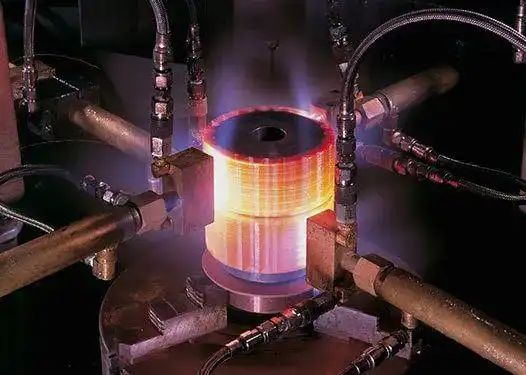Direct Hardening vs Case Hardening
If you’ve ever heard the terms “direct hardening” or “case hardening” and wondered what the difference is, you’re not alone. The subject can confuse those new to metalworking processes, so let’s break it down.
What is direct hardening?
Direct hardening is when steel is heated to a certain temperature and then cooled rapidly to create a harder surface. It is a simpler hardening method than case hardening and requires only one heat treatment. When direct hardening steel, the entire piece of steel will have the same hardness level, which makes direct hardening ideal for parts that require uniform hardness across the entire surface, such as shafts, gears, and cutting tools. Examples of direct hardening techniques include flame hardening and induction hardening.

What is case hardening?
Case hardening is a more complex process than direct hardening because it involves multiple heat treatments over a long time to achieve a hardened surface without compromising the toughness of the core material. During this process, a carbon-rich material is applied to the surface of the steel to increase its strength and wear resistance. This layer of material gives the steel its hardness while still leaving its core ductile. Examples of surface hardening include carburizing, cyaniding, nitriding, and more.
Differences between Direct Hardening and Surface Hardening
Direct hardening is the process of heating a metal to a high temperature and then cooling it quickly. This process produces a hard but brittle metal. Surface hardening is the process of heating a metal to a high temperature and then cooling it slowly. This process produces a tough but not as hard metal.
Direct hardening is best for small parts that won’t be subject to much wear and tear.
Surface hardening is best for larger parts, which are subject to more wear and tear.
Direct hardening is more expensive than surface hardening.
Conclusion:
To summarize, there are two main ways to increase the surface hardness of metals: direct hardening and surface hardening. Direct hardening is simpler but produces a uniform hardness across the entire workpiece, while Case Hardening provides more control over where you want your product to be hardened, but requires more time and effort overall. Knowing which method is best for your product depends on what kind of results you need to achieve from your finished product; however, if done correctly, both methods can help improve the wear resistance of metal surfaces. Website owners who use metals in their products or services should consider both processes as viable options for improving their durability and performance.











